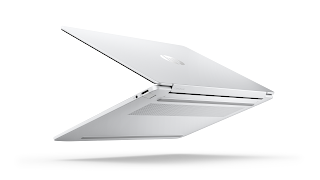HP has just lifted the curtain on its latest laptops, the OmniBook 5 14 and OmniBook 5 16, marking a bold leap into the future of mobile computing. Designed to blend productivity, portability, and premium aesthetics, these devices are among the first to feature Qualcomm’s Snapdragon X Plus processors, paired with vibrant OLED displays. The announcement signals HP’s growing confidence in ARM-based architecture for high-performance laptops, positioning itself as a contender in a market increasingly dominated by Apple’s M-series chips and Microsoft’s Surface lineup.
Snapdragon X Plus: A New Era of Performance and Efficiency
At the heart of both OmniBook models lies Qualcomm’s Snapdragon X Plus chip, a platform promising desktop-class performance with smartphone-like efficiency. The octa-core CPU, built on a 4nm process, is engineered to handle multitasking, creative workloads, and AI-driven tasks while sipping power. HP claims the chip’s integrated Adreno GPU will also deliver smooth visuals for light gaming and design work, though these laptops are squarely aimed at professionals seeking all-day battery life. Early benchmarks suggest the X Plus could rival Intel’s Core Ultra 7 and Apple’s M3 in efficiency, though real-world testing will be key.
OLED Screens: Visuals That Pop
The OmniBook 5 series doesn’t skimp on display quality. Both the 14-inch and 16-inch models boast OLED panels with a 120Hz refresh rate, offering deep blacks, rich colors, and razor-sharp contrast. The 16-inch variant steps it up with a 3K resolution, while the smaller model features a 2.8K screen—ideal for designers, content creators, or anyone craving immersive entertainment. HP has also emphasized eye comfort, including TÜV Rheinland-certified low blue light emission and automatic brightness adjustments.
For a deeper dive into specs and hands-on impressions, check out Notebookcheck’s detailed coverage here.
Sleek Design, Thoughtful Features
HP’s OmniBook line has always prioritized portability, and the fifth generation continues the trend. The 14-inch model weighs just 2.8 pounds (1.27 kg) with a slim 14.9mm profile, while the 16-inch version remains surprisingly lightweight at 3.4 pounds (1.54 kg). Both laptops sport aluminum chassis with minimalist styling, available in Nightfall Black and Ceramic White.
Notable upgrades include a haptic touchpad, a full-height keyboard with improved key travel, and a 1080p IR camera enhanced by AI-powered noise reduction and auto-framing. Connectivity options are robust, with Wi-Fi 7, Bluetooth 5.4, and a mix of USB-C (with Thunderbolt 4 support), USB-A, and HDMI 2.1 ports.
Battery Life: The Big Sell
HP is making big promises about endurance, citing up to 22 hours of video playback on the 14-inch model and 20 hours on the 16-inch variant—thanks to the Snapdragon X Plus’s efficiency and large 68Wh batteries. If these claims hold, the OmniBook 5 series could outlast most Intel/AMD rivals, making them ideal for travelers and remote workers.
Software: Windows on ARM Gets a Boost
Historically, Windows on ARM has faced criticism for app compatibility, but HP is optimistic. The OmniBook 5 ships with Windows 11 and leverages Qualcomm’s Oryon CPU architecture to emulate x86 apps more efficiently. HP also highlights native ARM support for Microsoft’s Suite, Adobe Photoshop, and popular browsers like Chrome and Edge.
Pricing and Availability
The OmniBook 5 14 starts at 1,399. Configurations scale up with added RAM (up to 32GB LPDDR5X) and storage (up to 1TB PCIe 4.0 SSD). Pre-orders open today, with shipments expected by late July.
The Bottom Line
With the OmniBook 5 series, HP is betting big on Qualcomm’s silicon to challenge Apple’s grip on the high-efficiency laptop market. The combination of Snapdragon X Plus power, stunning OLED screens, and marathon battery life could make these laptops a hit—if Windows on ARM delivers a seamless experience. For users tired of lugging chargers or squinting at lackluster displays, the OmniBook 5 might just be the upgrade worth waiting for.
Stay tuned for in-depth reviews as these devices hit the market, and let us know in the comments: Are you ready to switch to Snapdragon-powered Windows laptops?











Post a Comment